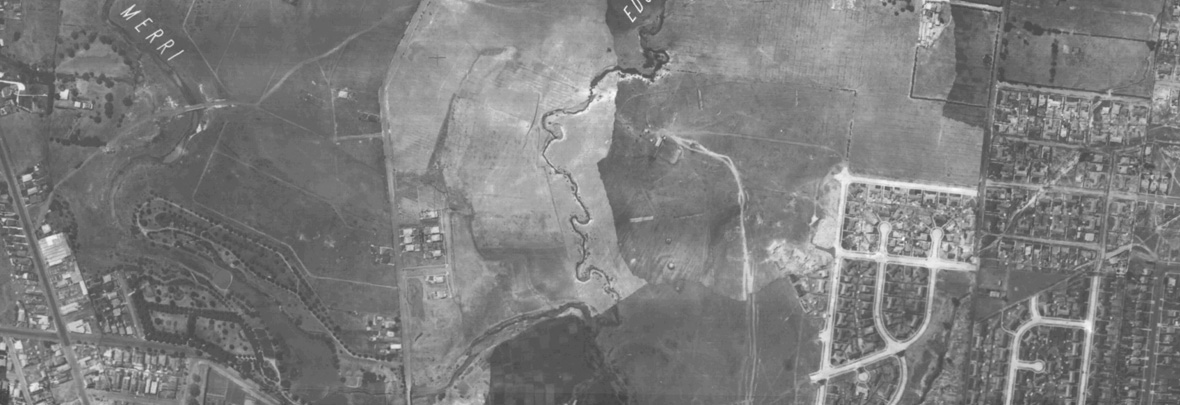Preliminary Aboriginal Heritage Test (PAHT)
In Victoria, Section 49B and 49C of the Aboriginal Heritage Act 2006 (as amended) introduces the Preliminary Aboriginal Heritage Test (PAHT).
This new instrument has been created as a means of formally determining whether a proposed activity requires the preparation of a cultural heritage management plan or not under the Victorian Aboriginal heritage regime.
The PAHT attempts to remove ambiguity from the process of determining whether a CHMP is required for an activity. Previously, even when there has been some doubt, the relevant council may have accepted a planning application without a CHMP if they were satisfied one wasn't required. This position was usually supported by some form of due diligence assessment by a Heritage Advisor which determined that a CHMP was not required. The due diligence assessment process has been unregulated since 2006, resulting in the production of assessments of varying quality and veracity.
The PAHT effectively removes the onus from council of making any decisions based on unregulated assessments (regardless of the veracity or quality of those assessments) and allows the council to 'push' the decision on to Aboriginal Victoria via the undertaking a PAHT.
The information required to be compiled and submitted for a PAHT includes the following:
- The name of the person proposing the activity.
- The names of the persons involved in the preparation of the test, including the ground inspection (if any)
- A detailed description of the proposed activity area, including a map indicating the location of the proposed activity area.
- A statement detailing the previous land use of the proposed activity area.
- A background assessment of the proposed activity area, including the results of the Register search, including a list of reports and cultural heritage management plans relevant to the proposed activity area;
- The details of the geographic region, land forms and geomorphology of which the proposed activity area forms a part;
- If a survey for Aboriginal cultural heritage is undertaken for the test, the results of that survey, and any details required under section 34A of the Aboriginal Heritage Act 2006.
- A statement of the method and conduct of the ground inspection of the proposed activity area (if any).
- A detailed description of any Aboriginal cultural heritage in the activity area consistent with the registration of that Aboriginal cultural heritage and including the registration number.
- Details of any consultation undertaken with a relevant registered Aboriginal party or traditional owner.
- A summary of any information provided by a relevant registered Aboriginal party or other person about the Aboriginal cultural heritage in the proposed activity area.
- Any oral information provided by a relevant registered Aboriginal party or other person about the Aboriginal cultural heritage in the proposed activity area, if the person who provided the information consents.
- A statement of whether a cultural heritage management plan is required in relation to the proposed activity.
- A statement of whether there has been significant ground disturbance in the proposed activity area and, if so, the nature and extent of that disturbance.
- Details of any other action recommended to protect or preserve any Aboriginal cultural heritage in the proposed activity area.
- The details of any obstacles encountered in preparing the test.
Significantly, the requirements for a PAHT are essentially the same as those for a 'Desktop CHMP' therefore the PAHT will need to be prepared by a registered Heritage Advisor to the same standards as a CHMP. The costs associated with the preparation of a PAHT will most likely be commensurate with those of a Desktop CHMP. The PAHT will need to be submitted to the regulator (Aboriginal Victoria) for certification. The application for certification must be in the prescribed form and accompanied by the prescribed fee.
Aboriginal Victoria has 21 days from the receipt of the PAHT to certify that a CHMP is required or not. Requests for more information may extend this time. Failure to supply the required information to the required standards or within the time frame given by Aboriginal Victoria may result in the application for certification of the PAHT lapsing.
If the PAHT finds that a CHMP is required, and Aboriginal Victoria certify that to be correct, then a CHMP will become mandatory for that activity (Section 46 (e)).
Key Questions
|
When should a PAHT be undertaken? |
Sponsors are expected to exercise due diligence in determining their requirements under the Act and the Regulations with regard to proposed activities. A sponsor may engage a heritage advisor to prepare a due diligence assessment to establish whether an approved CHMP is mandatory for a proposed activity. The responsible authority may then choose to accept the conclusions of the due diligence assessment when deciding whether a statutory authorisation can be issued. A PAHT should not be prepared in instances where a due diligence assessment clearly establishes a sponsor’s legislative requirements for a proposed activity. However, should a sponsor be unsure of their requirements and seek certainty, the preparation and submission of a PAHT for certification may be appropriate. |
|
Will the amendment mean councils can demand PAHTs for all relevant permit applications as a matter of policy? |
PAHTs are voluntary, and should only be undertaken if it is unclear as to whether a CHMP is required for proposed activity. Under the Act, a responsible authority (such as a Local Government Authority) cannot insist a PAHT be prepared before a statutory authorisation is issued for a proposed activity. A fee applies for a PAHT to be undertaken. |
|
Who can prepare a PAHT? |
A PAHT can be undertaken by any person who is seeking to determine whether a CHMP is required for a proposed activity. A sponsor may choose to engage a person with certain expertise, such as a heritage advisor, geomorphologist, or a Registered Aboriginal Party, to assist in the preparation of a PAHT. |
|
What must a PAHT include? |
A PAHT must include the information necessary to establish whether a CHMP is required for a proposed activity. The form of a PAHT is prescribed in the Regulations. A PAHT submitted to the Secretary for certification must also be accompanied by the fee prescribed in the Regulations. |
|
What happens if a survey for Aboriginal cultural heritage is undertaken for a PAHT? |
If a survey for Aboriginal cultural heritage is undertaken for a PAHT, the survey must be conducted in accordance with section 34A of the Act. The PAHT application must include the results of that survey, and any details required under section 34A of the Act. |
|
How is a PAHT certified by the Secretary? |
A PAHT will be certified by the Secretary if the conclusions are informed and confirmed by the supporting information. The conclusions of a PAHT must include:
The Secretary may request any additional information the Secretary reasonably considers necessary to make a decision. The 21 day evaluation period ceases to run when the Secretary requests the information and recommences when the information is provided. |
|
Can the Secretary’s decision as to certification of a PAHT be appealed? |
There are no appeal provisions as an application for certification of a PAHT is voluntary. Compliance with the certified PAHT decision is mandatory if it requires an approved CHMP for the proposed activity. |
|
Is auguring allowed during a ground inspection for the purposes of a PAHT? |
Auguring is permitted if it is undertaken for the purposes of establishing a soil profile, and not for the identification of Aboriginal cultural heritage. |
|
What happens to PAHT’s once certified? |
Certified PAHTs will be placed on the VAHR. The Register will only display a PAHT when it is certified. |
|
Is it expected that the certification document will contain all documents that led to it being certified? |
Yes, the certificate will be attached to the information contained in the application and will be placed on the register. |
|
If a PAHT needs be resubmitted, do I need to repay the fee? |
Yes. A fee needs to be paid per PAHT. |
For more information about undertaken a Preliminary Aboriginal Heritage Test in Victoria, please call us on 1300 724 913 or Email Us for more information.



